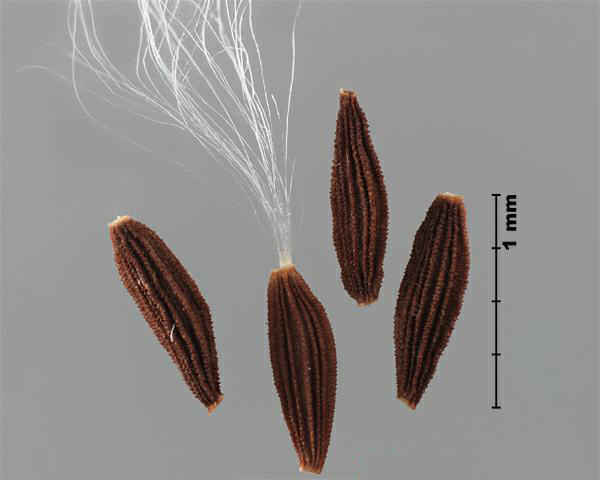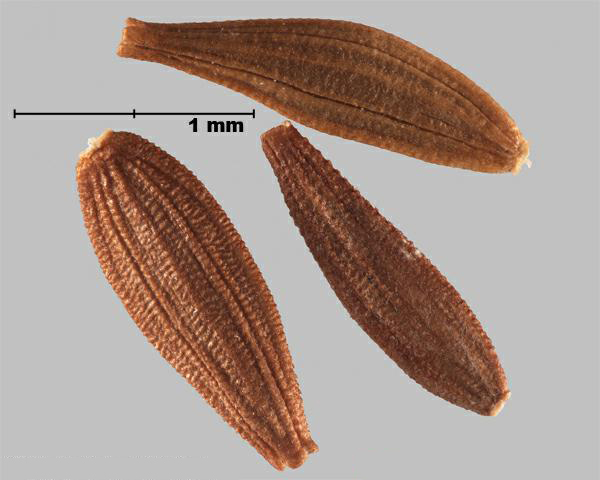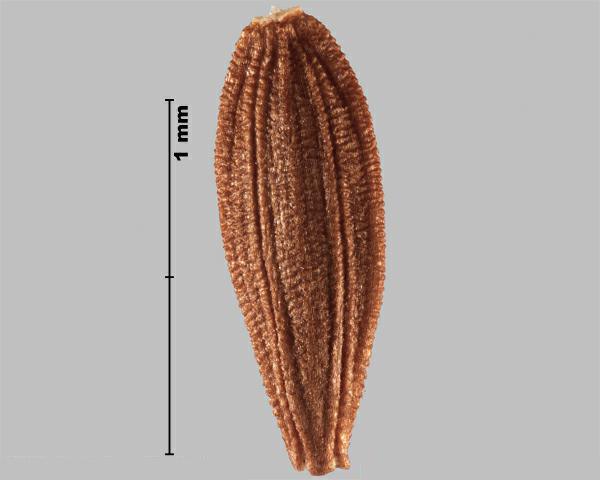Family
Asteraceae
Common Name
Perennial sow thistle
Regulation
Primary Noxious, Class 2 in the Canadian Weed Seeds Order, 2016 under the Seeds Act.
Distribution
Canadian: Occurs in all provinces and territories (Brouillet et al. 2016Footnote 1).
Worldwide: Native to Europe and temperate Asia, as far as the Russian Far East. Introduced in North America, Argentina, Chile, Australia, New Zealand, Japan, Indonesia and the Philippines (USDA-ARS 2016Footnote 2). In the United States it occurs throughout except for a few southern states (Kartesz 2011Footnote 3).
Duration of life cycle
Perennial
Seed or fruit type
Achene
Identification features
Size
- Achene length: 2.5 - 3.5 mm
- Achene width:1.0 - 1.5 mm
- Achene thickness: 0.5 - 1.0 mm
Shape
- Long oval-shaped achene; flattened
Surface Texture
- Achene has a dull surface with longitudinal folds and small transverse ridges
Colour
- Achene is dark brown
Other Features
- Pappus of fine white filaments 2-3 times as long as the achene may be present
Habitat and Crop Association
Cultivated fields, pastures, meadows, lawns, gardens, fences, shores, ditches, thickets, forests, roadsides and disturbed areas (Lemna and Messersmith 1990Footnote 4, Darbyshire 2003Footnote 5). A weed of any annual crop in temperate areas, notably cereals, corn, oilseed crops, sugarbeet, potatoes and vegetables (CABI 2016Footnote 6).
General Information
Perennial sow thistle was probably introduced into North America as a seed contaminant (Lemna and Messersmith 1990Footnote 4).
A single plant may produce 3000-9750 seeds (Lemna and Messersmith 1990Footnote 4), which can remain viable in the soil for several years (CABI 2016Footnote 6).
Similar species
Annual sow thistle (Sonchus oleraceus)
- Annual sow thistle achenes are similar in size, oval shape, being compressed and having longitudinal ridges as perennial sow thistle.
- Annual sow thistle achenes are narrower at the base, a lighter colour with variable transverse wrinkling as perennial sow thistle.
Photos




Similar species

